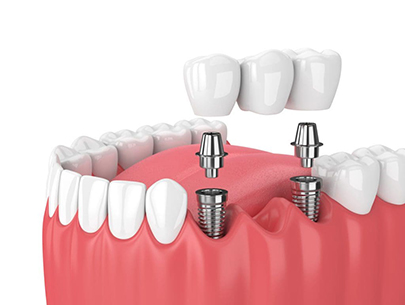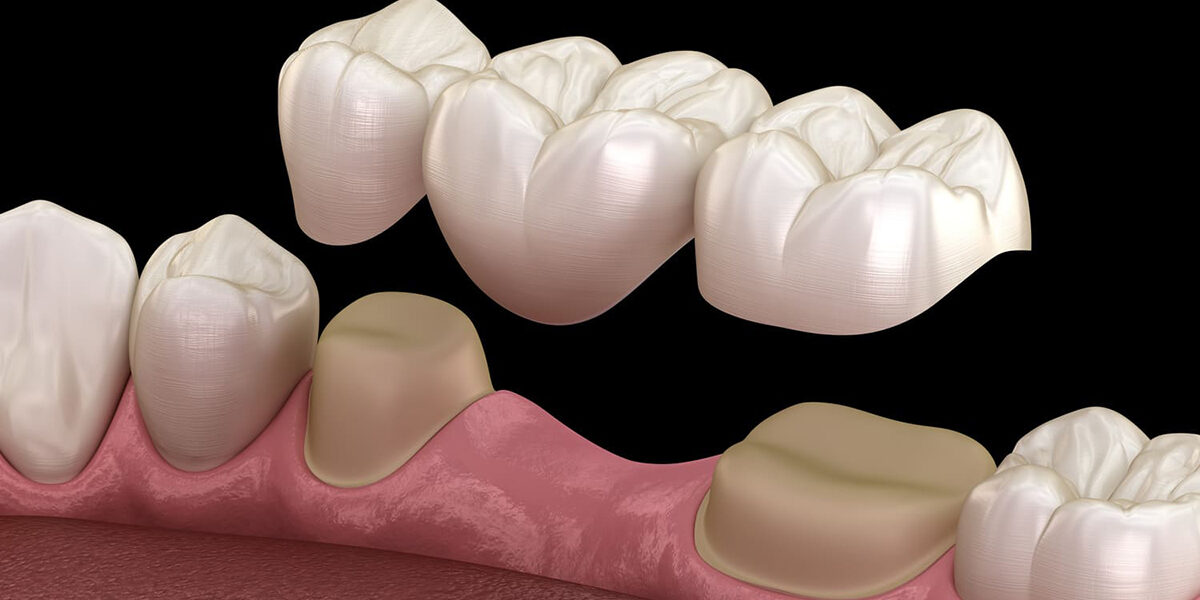12 important points about Dental Bridges
Thankfully, there are solutions for missing teeth in modern dentistry. One of the most popular and effective options is the dental bridge, which, as its name suggests, fills in the gaps left by one or more missing teeth. It is a fixed restoration with many functional and aesthetic benefits that will restore your smile and improve your oral health.
This article examines dental bridges and offers insightful commentary from dental professionals.
We will go over the parts of a bridge, the steps involved in the treatment process from consultation to completion, and the main benefits that bridges provide. Let’s get started!
Comprehending the Dental Bridge’s Structure
A dental bridge enhances smiles and oral health by fusing usefulness and beauty. Let’s dissect the essential elements that contribute to its efficacy in order to completely understand it.

A dental bridge’s constituent parts are as follows:
The natural teeth that fill the space left by a missing tooth (or teeth) are known as abutment teeth. To provide a solid foundation, the dentist gently reduces the enamel surface of these teeth. These prepped abutment teeth are then fastened with crowns, which are specially constructed caps that mimic natural teeth. The entire bridge structure is held in place by these crowns, which serve as anchors.
Artificial teeth called pontics are used to fill up the gaps created by missing teeth. Usually composed of sturdy materials like zirconia or porcelain, they replicate the color and translucency of real teeth for a seamless appearance. For extra robustness, dentists may utilize metal alloys for the pontic’s inner framework.
Options for Materials: Both crown and pontic material selection is influenced by a number of variables, including bite force, desired aesthetics, and bridge position. The popularity of porcelain fused to metal (PFM) crowns can be attributed to their ability to combine strength and beauty. Another great choice are zirconia crowns, which are renowned for their strength and realistic appearance.
Dental bridges come in two main varieties to choose from:
The most popular kind of bridges are fixed ones, which are glued to the abutment teeth. They need little upkeep and have outstanding stability.
Removable Bridges: In place of crowns, these bridges use metal wings that are affixed to the backs of the abutment teeth. They are appropriate in some circumstances, especially when the abutment teeth are too weak for conventional crowns, even though they are less prevalent than fixed bridges.
The Process of Bridgework: From Consultation to Finalization
The foundation of good bridgework is a comprehensive study. The dentist will carefully inspect your mouth, focusing on the surrounding teeth and the area where a tooth is missing. At this point, X-rays are essential because they give a clear view of the condition of your jawbone and the abutment teeth’s root structure. The dentist can go into great detail about your medical history, concerns, and treatment goals during this thorough evaluation. Additionally, it’s an ideal chance for the dentist to fully discuss the bridgework choice, including its benefits, drawbacks, and suitability for your particular circumstance.
Careful treatment planning becomes crucial when you and the dentist decide to move forward with a dental bridge. The quantity and position of missing teeth, your bite pattern, the condition of your jaw, and your preferred aesthetics are all taken into account during this design stage. In order to produce a model of your mouth that the dental lab can utilize to create the bespoke bridge, your dentist will take precise imprints of your teeth. Based on the position of the bridge and its intended use in your mouth, they will also choose the best material for the crowns and pontics.
Preparing the abutment teeth to provide a strong bridge foundation is the next stage. A tiny quantity of dentin and enamel must be carefully removed from each abutment tooth as part of this preparation. To guarantee patient comfort, local anesthetic is applied throughout this procedure. Without sacrificing the teeth’s structural integrity, the small amount of tooth reduction guarantees a good fit for the crowns.
The dentist will apply temporary crowns once the abutment teeth are ready. While the permanent bridge is being created in the dental lab, these temporary crowns, which are usually composed of acrylic, protect the exposed teeth and preserve appearance. Until the permanent bridge is prepared for implantation, it is crucial to handle these temporary crowns carefully.
The day finally comes for the permanent bridge to be installed. The dentist will examine the bridge’s fit, color, and general appearance after it is delivered from the lab. The dentist will carefully cement the bridge onto the prepared abutment teeth after making sure everything satisfies your expectations. For the best comfort and bite function, this generally painless process may require a few little tweaks.
Dental bridges’ advantages for patients
Patients looking to replace lost teeth can benefit greatly from a well-planned and positioned dental bridge.
Dental Bridges have the following advantages:
Improved Aesthetics and Confidence: The appearance of your smile can be greatly affected by missing teeth, which may cause self-consciousness. Dental bridges are replacements that seem natural, fill in the gaps, and give you a full, beautiful smile again.
Better Chewing Ability: Chewing can be difficult and annoying when teeth are missing. Certain foods may become challenging to handle, and the food may feel unevenly distributed in your mouth. By offering a firm surface for biting and crushing food, dental bridges help people regain their ability to chew.
Clearer Speech: Your ability to speak clearly may be impacted by missing teeth, especially in the front of your mouth. Pronunciation of sounds like “s,” “f,” and “th” may become slurred or challenging. Clearer and more articulate speech results from dental bridges, which fill the gap (pun intended) and restore the normal location of the tongue.
Prevents Teeth Shifting: The neighboring teeth have a tendency to move into the empty space to cover the missing tooth or teeth. This shifting may result in biting issues, crowding, and misalignment. By preserving the area that the missing tooth occupied and the remaining teeth in their correct placements, dental bridges stop this undesired movement.
Preserves Facial Structure: A sunken face can be caused by missing teeth, particularly at the back of the mouth. Dental bridges support the surrounding tissues and keep them from collapsing inward, preserving the natural structure of the face.
Contributes to General Oral Health: Dental bridges help to improve general oral health by keeping teeth from moving and preserving the normal alignment of the bite. By making it simpler to clean the spaces where the lost tooth once was, they also help people maintain good dental hygiene.
Please feel free to Contact Us if you think we can help with your Dental Bridge.



